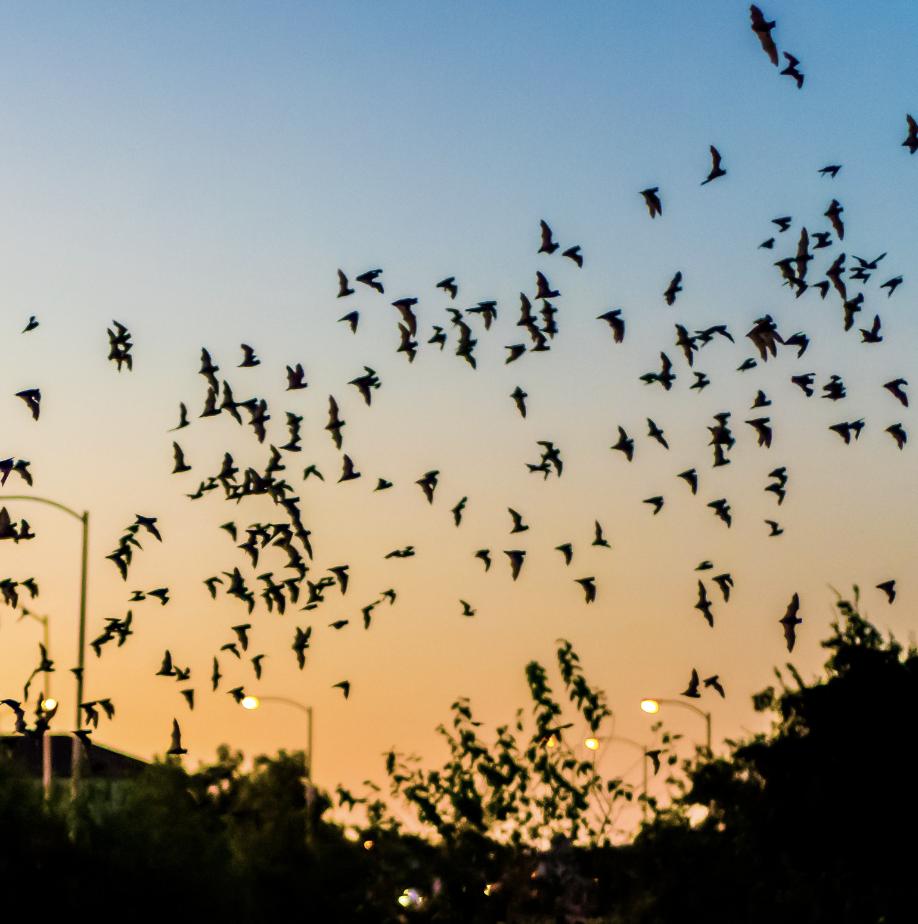Bats often get a bad rap. They’re portrayed as spooky, Dracula-esque, blood-thirsty villains.
In reality, the majority of these nocturnal creatures are harmless, and incredibly important for the health of our planet.
Bats play a major role in pest control, pollination, and seed distribution.
Today, we’ll learn about how bats contribute to the environment, the threats they face, and how to help.
Common bat species
There are more than 1300 bat species in the world; 47 of those can be found in the US. Some of the most common include:
* Little brown bat
* Big brown bat
* Mexican free-tailed bat
* Hoary bat
Bat myths
Bats are blind
Bats can see. In fact, their eyes have evolved for low-light conditions. This, along with echolocation for many species, allows them to navigate and find prey in the dark.
Bats are aggressive
Bats aren’t typically mean, and will only attack if they feel threatened or trapped.
All bats drink blood
Of the 1300+ bat species, only three are vampire bats. Located in Mexico, Central and South America, they typically feed on sleeping livestock. There have been cases of humans being bitten, but it’s very rare.
All bats have rabies
While bats can carry rabies, the vast majority aren’t infected.
Importance of bats
Pest control
While some bats do eat other animals or fruits, the majority of bats are insectivores. They eat tons of insects every night, which helps control bug populations. Different bat species eat a variety of insects, like mosquitos, beetles, and moths. One small bat can eat up to 1200 insects per hour. A large colony of bats can eat hundreds of tons of insects every night.
For this reason, bats are extremely valuable for agricultural pest control. It’s estimated that they save farmers $3.7 billion for pest control annually.
Pollination
Bats are important pollinators for night-blooming, desert plants. Nectar-eating bats feed on flowers (and the bugs on them), and transfer pollen to other plants. This helps with fertilization.
Without bats, many plants would struggle to reproduce.
More than 300 species of fruit rely on bat pollination, including bananas, mangoes, guava, and durian. Also, bats pollinate the agave plant. The bulbs of this plant are used to make tequila.
Spreading seeds
Fruit bats are important for spreading seeds across long distances. When bats eat fruit and nectar, they ingest seeds, which are then spread through their droppings.
This process allows plants to grow in new areas and maintain genetic diversity. It may also help with reforesting areas that have been cleared of trees.
Threats to bats
Pesticides
Pesticides harm bats in a few ways. When they eat insects that have been exposed to pesticides, they can be poisoned, too. This may impact their ability to use echolocation properly, making it difficult to navigate or find food.
Also, pesticides reduce the number of insects available for bats to eat. This can cause malnourishment and a weakened immune system. When their immune system is weak, they’re more susceptible to disease.
Disease
White nose syndrome (WNS) is one of the largest threats to North American bats. It’s a fungal disease that affects hibernating bats. The fungus grows on the bats’ noses, wings, and other body parts, causing irritation and disrupting hibernation.
Bats with WNS often wake up more often, which uses up energy stores. This can cause them to die from starvation. This disease spreads quickly through hibernating bat colonies. Since 2006, it has killed millions of bats in North America.
Humans
Human disruption, like deforestation, pollution (chemical, light pollution, etc.), urbanization, and agricultural expansion, is a major cause of habitat loss for bats.
These things can lead to their inability to find shelter, food, clean water, or a safe migratory path.
Cats
Cats are a major predator of bats and can have a significant negative impact on their populations. Domestic and feral cats often hunt and kill bats, both in their natural habitat and human-made bat boxes.
Bats are vulnerable to predation by cats because they roost in areas easily accessible to cats, like trees, rock crevices, and abandoned structures.
How to help bats
* Avoid using pesticides or herbicides in the garden
* Grow native plants and flowers that bats (and the insects they eat) use for shelter and food
* Keep cats indoors
* Provide bat boxes. This gives bats a safe place to roost and raise babies. For the bats’ safety, consult a local conservation organization for advice about using and maintaining a bat box.
* Advocate for protection of natural habitats such as forests, wetlands, and caves, which provide important roosting and food sources for bats
* Inform others about the importance of bats and how they can help with conservation efforts
Key takeaways
* Bats are important for pest control, pollination, and spreading seeds
* They face threats from pesticides, disease, human disruption, and predators like cats
* To help bats, avoid pesticides, provide bat boxes, keep cats indoors, and advocate for natural habitat protection
Sources
https://www.fs.usda.gov/Internet/FSE_DOCUMENTS/fseprd476773.pdf
https://www.doi.gov/blog/9-coolest-bat-species-united-states
https://www.fs.usda.gov/wildflowers/pollinators/animals/bats.shtml

